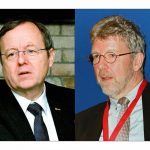Securing GNSS – A Trip Down Cryptography Lane
We trace back through time to witness the progress in anti-spoofing solutions and describe how we arrived at the designs being implemented today; principally GPS’ CHIMERA, Galileo’s OSNMA, and ICAO’s SBAS data scheme.













